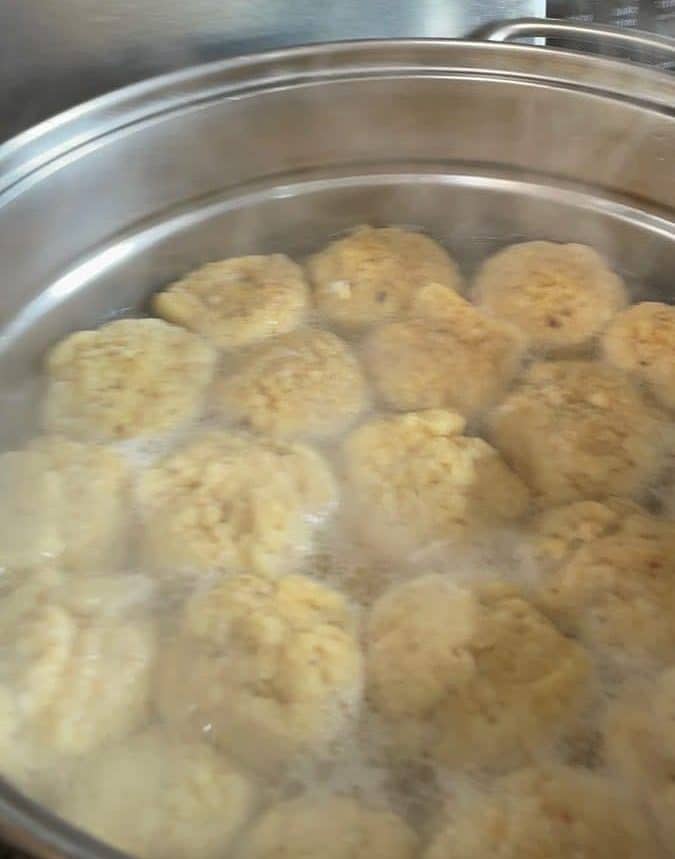Matzo ball soup is a traditional, and beloved, Jewish dish.
Matzo balls are dumplings made from matzo meal, eggs, water, and a small amount of oil, served in a savory chicken broth.
Light and fluffy, or dense and chewy? The Passover seder in many homes is a time for family and friends to gather and compare the matzo balls to memories of “how Mama made them.” The dinner table conversation when I was growing up always included a debate on using still versus sparkling (seltzer) water in the mix.
“These are nothing more than dumplings made with matzo meal (and, of course, shmaltz). As with all dumplings, there are two schools of thought: you can make them light, or you can make them dense and dangerous to drop on your foot.” – Raymond Sokolov, The Jewish American Kitchen.
Matzo (matzah, matzo) is eaten on Passover as a reminder of the Jewish people’s hasty departure from Egypt, as described in the biblical story of Exodus. According to the story, the Jews were slaves in Egypt and were forced to leave in a hurry after God inflicted ten plagues on the Egyptians, culminating in the death of the firstborn. The Jews did not have time to wait for their bread to rise, so they baked unleavened bread, or matzo, which is made from flour and water and does not contain yeast or other leavening agents.
In commemoration of this story, Jews are commanded to eat matzo during the holiday of Passover, which lasts for eight days. During this time, they abstain from all leavened products, including bread, pasta, and other foods made with wheat, barley, rye, oats, and spelt. Instead, they eat matzo and other unleavened foods to symbolize the haste with which the Jews left Egypt and the humility and simplicity of their diet during their time in the wilderness.
The exact origin of matzo ball soup is not known, but it is believed to have originated in Eastern Europe, where matzo was a staple food for Jewish communities. Over time, matzo ball soup became a traditional dish for Jewish holidays and special occasions.

Several brands of packaged mixes for matzo balls, with and without the soup base mix, can be a convenient way to make matzo ball soup. They make a quick dinner at any time of year, and the soup, known as “Jewish Penicillin” is a favorite home remedy for colds and minor ailments. The rabbinically certified “Kosher for Passover” leftovers are generally available at discounted prices on supermarket shelves throughout the year, after the eight-day Passover holiday. There are whole wheat and gluten-free varieties (don’t get the ones in jars!). Just add eggs, water, oil, following the directions on the back of box. Making the matzo balls from scratch is easy, but if you are short on time or not confident in your cooking skills, a packaged mix can be a good option.
My favorite go-to cookbook with classic recipes that can be relied on to bring back childhood memories is The Jewish American Kitchen by Raymond Sokolov. The pages of my copy are dog-eared, opening automatically to the kugels, tzimmes, pot roast of brisket, “health” salads, soup recipes, and more.
Like debates about roast turkey on Thanksgiving, everyone has an opinion on how much to keep the taste traditional, and every food blog has a way to give the time-honored dish a new twist. If you are not a fan of the Turducken concept, here’s a simple, super-easy recipe with the authentic taste of the Ashkenazi staple. If you are anxious to riff on a favorite, add chopped fresh basil or other dried herbs, stuff with brisket‑‑ you can’t go (too) wrong. ![]()
